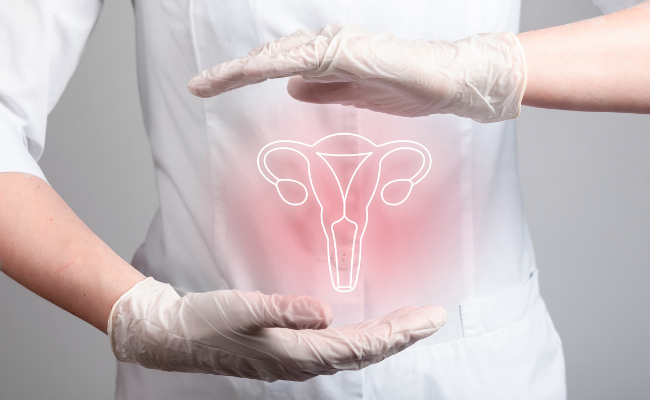Know about In Vitro Fertilisation
- January 22, 2024
- No Comments

What is In Vitro Fertilisation (IVF)?
In Vitro Fertilization (IVF) is an advanced form of assisted reproductive technology (ART) that has revolutionized the field of reproductive medicine. This innovative procedure entails the fertilization of an egg with sperm outside the human body, typically conducted within a laboratory setting. The term "in vitro" is derived from Latin, signifying "in glass," which harkens back to the initial use of glass containers for facilitating the intricate process of fertilization.
Why In Vitro Fertilisation?
The decision to pursue IVF often arises when natural conception becomes a challenging or unattainable goal due to various underlying factors. These factors may include blocked fallopian tubes, male infertility issues, ovulation disorders, or unexplained infertility. IVF serves as a solution for those who have exhausted conventional methods of conception or find themselves facing complex fertility challenges.
Moreover, IVF is not solely confined to addressing infertility; it has expanded its scope to encompass cases where genetic disorders are a concern. The integration of Preimplantation Genetic Diagnosis (PGD) with IVF allows for the screening of embryos, enabling prospective parents to make informed decisions about their family planning based on genetic information.
How Does In Vitro Fertilisation Work?
In vitro fertilisation is a meticulously orchestrated process that aims to maximize the chances of successful fertilization and subsequent implantation. The step-by-step procedure involves several key stages:
Ovulation Stimulation:
- The process commences with the administration of fertility medications, such as Follicle-Stimulating Hormone (FSH) and Luteinizing Hormone (LH), to stimulate the ovaries.
- The goal is to prompt the development of multiple eggs, increasing the likelihood of successful fertilization.
Egg Retrieval:
- Once the eggs reach maturity, a minor surgical procedure known as egg retrieval is performed.
- This involves the insertion of a thin needle through the vaginal wall to collect the eggs from the ovaries.
Sperm Collection:
- Simultaneously, sperm is collected from the male partner or a sperm donor.
- High-quality sperm is then selected for the fertilization process.
Fertilization:
- In the laboratory, the eggs and sperm are combined to facilitate fertilization.
- The fertilized eggs, now referred to as embryos, are carefully monitored for their developmental progress.
Embryo Transfer:
- After a few days of monitoring, one or more healthy embryos are selected for transfer into the woman's uterus.
- This is typically accomplished by using a thin tube to pass the embryos through the cervix.
Implantation:
- Successful implantation of the embryo into the lining of the uterus leads to pregnancy.
Treatment Solutions within In Vitro Fertilisation:
Intracytoplasmic Sperm Injection (ICSI):
- ICSI is often utilized in conjunction with IVF and involves the direct injection of a single sperm into an egg.
- This method proves particularly beneficial in cases of male infertility where conventional methods of fertilization may pose challenges.
Assisted Hatching:
- Some embryos may have a thick outer layer that hinders their ability to implant.
- Assisted hatching involves creating a small opening in the outer layer of the embryo to facilitate successful implantation.
Cryopreservation:
- Unused embryos can be frozen and stored for future use, allowing couples the option to attempt additional pregnancies without undergoing the complete IVF process again.
Egg and Sperm Donation:
- In cases where one partner has fertility issues, whether male or female, the option of egg or sperm donation from a third party may be considered.
Preimplantation Genetic Diagnosis (PGD) and Screening (PGS):
- PGD involves the testing of embryos for specific genetic disorders before implantation, offering insights into the genetic health of the potential child.
- PGS screens embryos for chromosomal abnormalities, thereby reducing the risk of miscarriage and increasing the chances of a successful pregnancy.
Benefits of In Vitro Fertilisation:
- Increased Success Rates: IVF significantly enhances the chances of achieving a successful pregnancy, especially for couples facing fertility challenges that may not be addressed through other means.
- Control over Timing and Family Size: IVF provides couples with greater control over the timing of conception, enabling them to plan the size of their family according to their preferences and circumstances.
- Addressing Male Infertility: Intracytoplasmic Sperm Injection (ICSI), a technique commonly integrated with IVF, enables couples with male infertility issues to achieve fertilization and move closer to their goal of having a child.
- Genetic Screening: The integration of PGD and PGS in IVF procedures allows for the identification and avoidance of certain genetic disorders, offering prospective parents crucial information about the genetic health of their future child.
- Cryopreservation for Future Attempts: The ability to freeze and store embryos allows couples to attempt additional pregnancies without undergoing the complete IVF process again, providing a cost-effective and less invasive option.
- Alternative for Unexplained Infertility: IVF serves as a viable and often successful option for couples with unexplained infertility, offering them hope and a pathway to parenthood.
Comments (0)